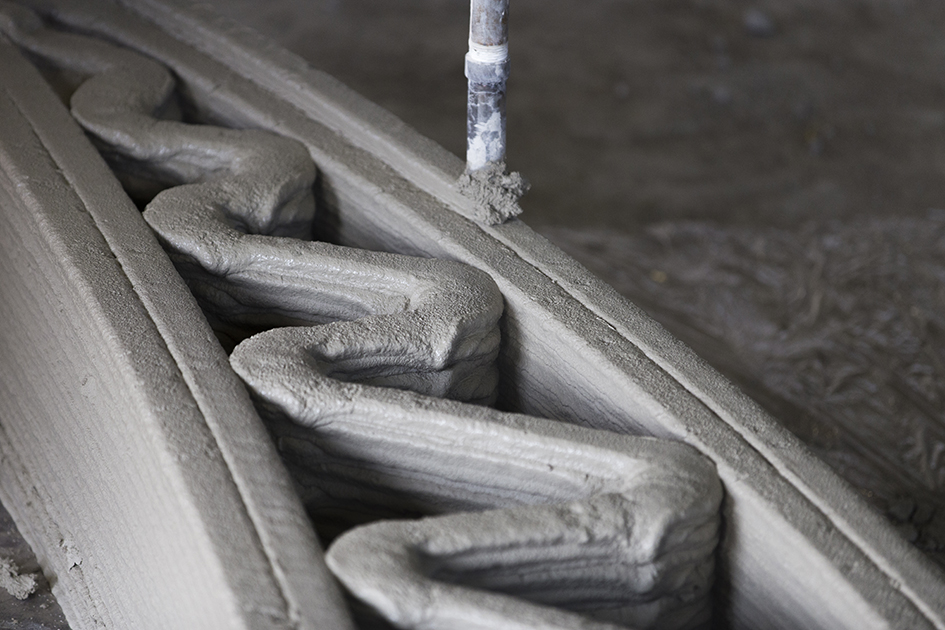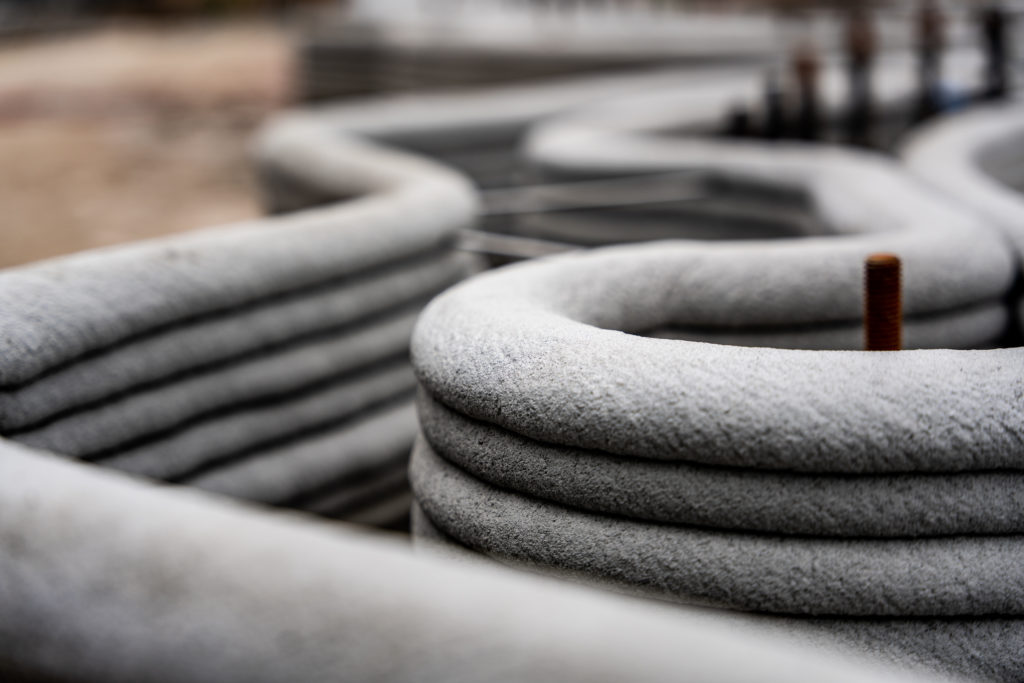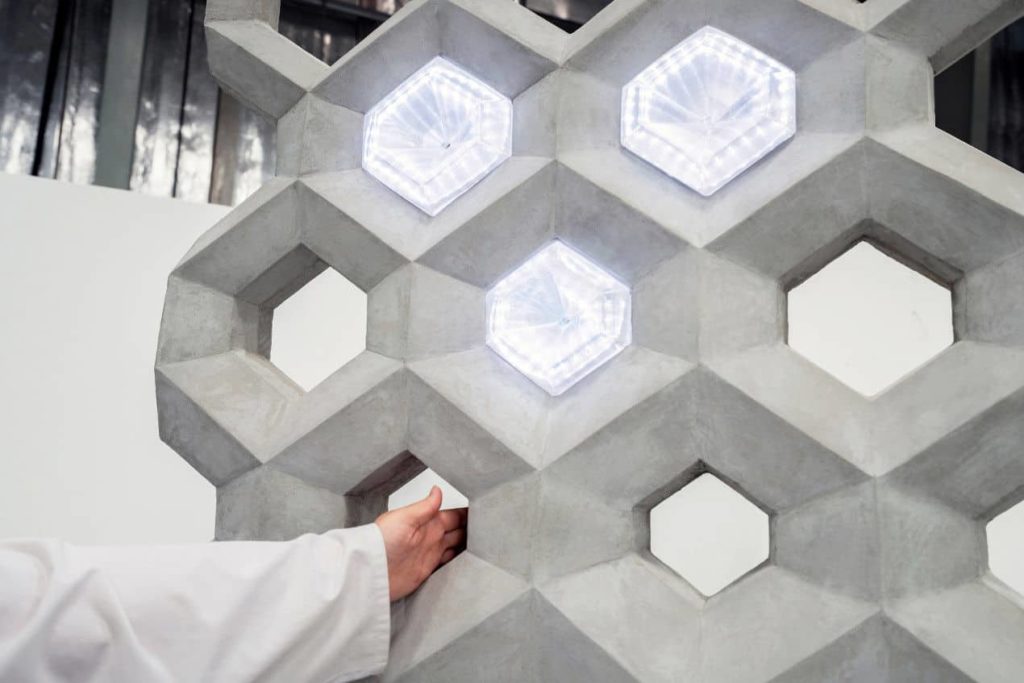House 3D printing has really captured the world’s imagination. Claims of printing houses in 24 hours and solving the housing crisis worldwide are being made in chorus. Large construction companies are piling in and local governments are getting excited. I’ve found myself seeing the future of this evolving additive construction (AC) market very differently than others, however. I think that the emphasis should be much more on other elements of this 3D printing revolution. For that reason, I propose a reavalution of sorts in order to get a more nuanced view of the true potential of AC.
Generally the excitement related to the technology has been about: Directly 3D printing houses, on location, in the open air, using concrete. In this article, I’m going to breakdown each of these elements and the issues I see in them.
3D Printing on Location
For the military, and in austere environments, 3D printing on location really makes sense. However, the whole logic of automated construction somehow making housing more available in poor areas is a strange one for me. Poor countries have high unemployment and a lack of skills training. If resources are directed at training they would result in jobs. By bringing in external equipment and skilled people AC firms are not solving a housing crisis but rather denying jobs to locals. Less developed nations may not have the integrated supply chain to manufacture cars or the infrastructure needed to produce cell phones but they could perform construction. Some AC companies are literally aiding the import of a good that supplants local labor and local industry.
 Concrete 3D printing from ChangeMaker 3D. Image courtesy of ChangeMaker 3D.
Concrete 3D printing from ChangeMaker 3D. Image courtesy of ChangeMaker 3D.In a place with nothing, say the destroyed parts of Syria, construction 3D printing on location may make sense to a certain extent. However, even there, locals would benefit from jobs and skills, not to mention the hope and self-esteem generated from rebuilding their own societies. In other locations that are more stable, developing indigenous construction industries will provide jobs and build the sectors of the future. Construction is also an intermediate step that can bring inward investment and long-term growth to areas before they are able to develop other industries.
3D Printing in the Open Air
If a firm needs to print on location, it will also need to control humidity, rain, leaves, and all manner of environmental factors. Otherwise, layers could vary or harden differently as dew covers them or the sun beats down on them. Any moisture between layers could negatively impact adhesion. Frost and cold snaps would be difficult also. Ground temperature would change throughout the day, as would the temperature of the structure and the top layer. Would you like that kind of variability in your house construction? In order to protect a home from rain, it would be necessary to build a structure to cover the entire gantry or build area. I’m not sure how to shield the structure from changes in moisture, temperature and other environmental variables. It is worth noting, however, that companies like COBOD are enabling on-site construction somehow, so there may be methods of doing so, including environmentally controlled setups with tarps and other equipment.
What about Prefab Construction?
 Extruded concrete from the Vulcan system. Image courtesy of ICON.
Extruded concrete from the Vulcan system. Image courtesy of ICON.If businesses are going to print buildings, why not do it at one central location, like Mighty Buildings, Branch Technology, WinSun, or GE Renewable. A factory covered in solar panels and with a conditioned environment protected from the environment could be built in a location where water is plentiful and cheap.Granted if a company wanted to print an entire structure, the parts would have to fit into a number of trucks, barges or train carriages that would cost extra. However, for many structures, there isn’t much of an advantage of making a whole building in one go. In those cases, advantages would be reaped by constructing elements centrally and then shipping them to the site. For super remote construction areas, such as Alaska or areas without highway access, printing on-site may still make sense. But, for most of the world, road access would tend to lower costs. Projects could be faster by trucking in parts and only building foundations locally.
Direct 3D Printing
Direct 3D printing is interesting, but there are also indirect processes with great potential. For example, ETH Zurich 3D prints thin formwork from polypropylene or other filled polymers before filling it with concrete. This process could be considerably cheaper and faster than 3D printing concrete directly. Some firms, notably Mighty Buildings and Saint Gobain, also explore the 3D printing of formwork.
Houses
3D printing houses may very well make sense, but the designs do not have to be the fanciful Jetsons-style homes that we currently see. Instead, they will have to be optimized for 3D printing. Think self-supporting beehives, rather than a Dune-like structures full of gaps to be traversed. Even if we look at houses as an application directly, it is not clear why they are especially appealing applications for 3D printing. They make for good media stories, sure, but, beyond that, there may be little in the way of advantages.
The following, however, all make better business cases for AC: stairs, bridges, complex formwork for tunnels, small buildings in remote areas, concrete traffic barriers and blocks, and planters. These are all objects that need to be customized for a particular location or application. They are relatively low value, but the formwork represent significant costs, where time to market is important and stock is expensive. With houses, rapidly returning capital is an attractive prospect. However, if you need to make a 100 planters from 100 pieces of formwork, then the cost is derived from the formwork, not the concrete and production process. For custom objects, AM can make a huge difference.
Concrete
The single greatest misgiving that I have about the AC is the over-reliance on concrete. We can see concrete companies enter the market with strategic investments and their own materials. This is kind of like a revolution in plumbing and sanitation being driven by the lead companies. Concrete is the world’s third largest source of air pollution and represents five percent of all CO2 emissions, due to its production. To simply carry on with concrete would be a missed opportunity. In this regard, AC would not revolutionize anything aside from greenwashing campaigns. Along side this new construction paradigm, it is crucial that we produce carbon neutral or negative materials. We need to educe the energy necessary to make them, while reducing water and other resources that go into them. To do anything else would be to sell ourselves and our planet short.
To learn more about the world of AC, attend Additive Manufacturing Strategies 2023, Feb. 7-9, where 3DPrint.com and SmarTech Analysis will host a panel titled “Panel 3: Large Format Machines in Construction.“
Subscribe to Our Email Newsletter
Stay up-to-date on all the latest news from the 3D printing industry and receive information and offers from third party vendors.
You May Also Like
Gorilla Sports GE’s First 3D Printed Titanium Cast
How do you help a gorilla with a broken arm? Sounds like the start of a bad joke a zookeeper might tell, but it’s an actual dilemma recently faced by...
Nylon 3D Printed Parts Made More Functional with Coatings & Colors
Parts 3D printed from polyamide (PA, Nylon) 12 using powder bed fusion (PBF) are a mainstay in the additive manufacturing (AM) industry. While post-finishing processes have improved the porosity of...
$25M to Back Sintavia’s Largest Expansion of Metal 3D Printing Capacity Since 2019
Sintavia, the digital manufacturing company specializing in mission-critical parts for strategic sectors, announced a $25 million investment to increase its production capacity, the largest expansion to its operations since 2019....
Velo3D Initiates Public Offering in a Bid to Strengthen Financial Foundations and Drive Future Growth
Velo3D (NYSE: VLD) has been among a number of publicly traded 3D printing firms that have attempted to weather the current macroeconomic climate. After posting a challenging financial report for 2023,...
































